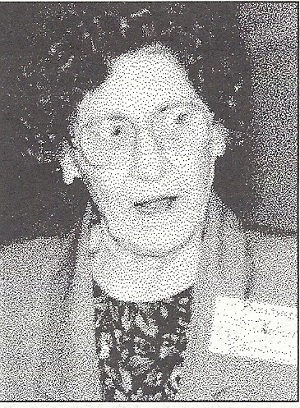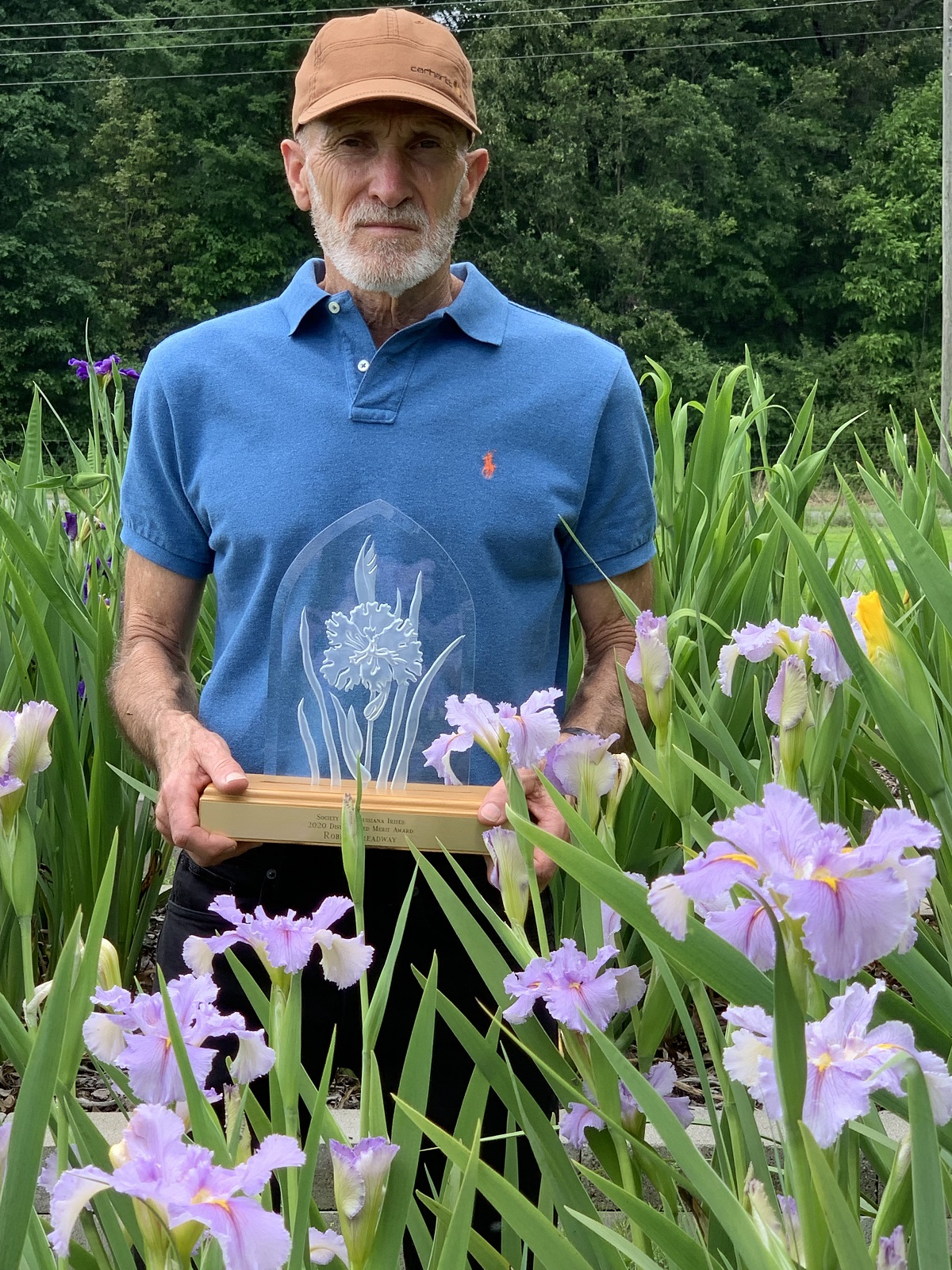By Ron L. Killingsworth
Visiting the home of Caroline Dormon is like traveling back in time. The Briarwood Nature Preserve has certainly accomplished its mission of keeping the preserve the way it was when Dr. Dormon lived in this tranquil place. My family was fortunate to visit Briarwood in early April when the curators, Richard and Jesse Johnson, were honored for their many years of service to Briarwood, beginning in about 1971 as full time work. Sue and I returned in late April, during the LA iris bloom season, and were delighted to see some of the older varieties of LA irises growing in Caroline’s “bay gall” garden.
Just before Caroline died she formed a non-profit organization and, in her will, left the house and property to The Foundation for the Preservation of the Caroline Dormon Nature Preserve. She left little or no money to support the organization as she had lived a very frugal life and money had never been very important to her. She had many problems just trying to get financial backing in order to have her books published.
Edith Stern from Longvue Gardens in New Orleans and some of her “flower loving” friends funded the publication of Caroline’s book, Wild Flowers of Louisiana. Profits from the sale of this book provided the “seed” money to begin organizing and keeping up the foundation, with the purpose of keeping the preserve the way it was when Caroline walked its shaded pathways.
Caroline collected Louisiana Irises from various places in south LA. She became good friends with Sidney Conger of Arcadia in north central LA. They began, along with others, to hybridize the collected irises. Caroline had a “bay gall” (sweet bay and red bay magnolias growing in a low place where seep water leaves the underground) and she selected this place to grow her seedlings in beds in this boggy area. There were no other places on the property where she was willing to open up the area to the sun. This area tended to stay wet most of the year and reduced the need to water the plants. Caroline had no electricity and drew water from a well. She also had irises planted on the lower side of her property where two streams came together. When a neighbor dammed up one of the streams to build a pond, the water backed up into her beds and she had to move these irises to the “Bay Garden”. The “Bay Garden” at Briarwood is one of the oldest LA iris gardens continually in existence.
Jessie and Richard Johnson have taken care of the property since Caroline’s death. Richard often worked for Caroline as a child for $.08 a day. Over the years Richard became one of Caroline’s favorites and she trusted him to climb trees in order to trim dead branches. Often the whole community would help out at Briarwood on special projects.
Back in the early 60’s my father was the pastor of Briarwood Baptist Church. The church was located in Reidhiemer and Caroline’s place was up the road closer to Saline. My older sister, Bobbie Ann, a college student at the time, used to visit Caroline’s place and she was fascinated by Caroline’s way of life. As a young teenage boy, I was simply afraid of this “odd” woman who lived in the woods and grew flowers.
Louisiana iris lovers tend to think of Caroline Dormon and Briarwood as a place of Louisiana irises and their beginnings. Briarwood certainly has many varieties of LA irises but they are only a small part of what makes Briarwood loved by all friends of native plants and wilderness areas. Briarwood is home of the largest and probably oldest long leaf pine. It has many varieties of magnolia trees. Native azaleas abound and several ponds offer many forms of water plants. In front of Caroline’s cabin is one of the largest “buckeye” bushes (Aesculus pavia) I have ever seen. It is as big as a tree! (It is a tribute to Caroline that I was able to look up the real name of this native plant in her book, Natives Preferred, copyrighted in 1965, and published by Claitor’s Book Store in Baton Rouge, LA. This book is a treasure and is available through the foundation at The Foundation for the Preservation of the Caroline Dormon Nature Preserve Inc. 216 Caroline Dormon Road, Saline, LA 71070 Telephone: (318) 576-3379)
I could write many pages about the beauty of the native plants available for viewing at Briarwood. The Mountain laurel (Kalmia latifolia) located throughout the preserve is beyond description! Several large plantings of this laurel are located at the entrance to the Bay Garden, the location of most of the LA irises, and the main subject of this writing.
Before Caroline’s death in 1971, she had lost or given away most of her LA iris collection. The lack of electricity caused her to move some of the irises up near her rabbit pens, near her log house, so she could draw water from her well to keep them thriving. She also sold a lot of her collection to A. J. Hodges during her landscaping consultations on the layout of the famous Hodges Gardens in Many, LA. Others she gave away to friends. Once Caroline had discovered the LA iris, she fell in love with this native plant. She wrote many articles about them and corresponded with people in England, New Zealand and Australia. She also sent LA iris seeds to many of these people. Caroline never let her lack of money stop her from any project she wanted to start and finish. When she needed work done around the preserve, she would approach the men in the community. If they did not respond, she would contact the wives and they would “bring the men around to mother’s way of thinking”.
In about 1972 efforts were organized to restore the “Bay Gardens” iris beds. Many LA iris lovers and hybridizers were contacted. Among the many who contributed irises to restore this garden were Arny, Granger, Conger and Mertzweiller. This list is certainly not all inclusive as many others provided irises also. Others provided some of the McMillian collected and introduced varieties. Interestingly “The Khan” was provided by a lady in Oregon. This winner of many awards in the 50’s and a Caroline introduction had been lost to Briarwood. Special efforts were made to restore the Dormon introductions that had won awards and all of them: Saucy Minx, The Khan, Wheelhorse, Violet Ray and Mary S. Deballion, were generously provided by lovers of LA irises from all over the United States.
The Bay Garden is fenced to keep unwanted varmints from feasting on the plants. Entrance can be gained from either side of the garden. The garden is located in a small valley and is surrounded by stately trees and shrubs. The garden does not receive as much sunlight as the irises would prefer, but cutting the stately trees to provide more sunlight would probably cause Caroline to turn over in her grave!
The paths between the irises are covered with wide, old rubber belts that came from some industry. The irises are located in small separated beds and most are tagged with the name of the variety. The lack of identify tags was not a problem for Jessie Johnson’s vast knowledge! I was immediately taken by the beauty of the garden with its small stream, bridges and other plants growing along with the LA irises. One such plant is the Pitcher-Plant (Sarracenia purpurea). This unusual plant does not have flowers but colored leaves that are the “pitchers” that catch and absorb unsuspecting insects. Jessie guided us among the plants and readily identified the varieties that were in bloom. I admit I have not been interested in LA irises for very long, but I thought I was at least familiar with most of the named varieties. How wrong I was. Jessie started naming each variety as I photographed them and recorded the picture numbers for future identification. Very few of the names were familiar to me and I knew that I had traveled back in time to the LA irises of the 40’s, 50’s and 60’s. These LA irises looked like LA irises!
“Captain Bill” was one of the first to catch my eye. This beautiful reddish iris seems to never have won an award. I was unfamiliar with its parents. Anyone who says there are no “red” irises should look at this one. “Caroginia”, a Conger 1948 introduction, is a beautiful “spidery” iris that I would like to use in my hybridization program of trying to produce more of the “spidery ones”. It would be interesting to know how the name was chosen. The pollen parent for Caroginia is “Caroline Dormon”, a 1943 introduction by “Dormon”, which I assume was Mrs. Ruth, Caroline’s sister, who also hybridized some of the early ones. “Dora Dey”, an Arny 1957 introduction is another fine “spidery” variety that I had not seen before nor heard about. Its pod parent is “Bayou Sunset”, a MacMillan 1945, which is also spidery, while the pollen parent was a collected blue I.giganticaerulea seedling. Jessie Johnson said this iris was Charles Arny’s first seedling. “Ellen Rockwell”, an Arny 1973, is a beautiful blue self and is a sibling of Dora Dey. “F.A.C. McCulla”, an Arny 1973 is certainly “beet red” just as the registration states. “Gulf Surf”, another Arny from 1962, must have been one of the first to show white around the signal. “Haile Salassie II”, a Trichel 1950, is a nice dark red-violet sibling of “Haile Salassie”, both being nice spidery varieties. “King Calcasieu”, a Holleyman 1964, is a nice reddish-purple self of the spidery variety. The registry indicates it had French parents, Marquise de Lafayette and Marquis de Lafayette. A sense of humor was appreciated then as well as now.
“Lockett’s Luck”, a Thibault from 1947, which raised a lot of interest at a previous convention, is a nice pink self and spidery iris. This confused iris has two names. Between “Rattlesnake” and Lockett’s Luck, I’ll take the latter. “Louisiana Teddy Bear”, an Arny 1976, is a beautiful copper color with darker veining. The stands appear to be more pinkish with copper veining. This is a truly beautiful spidery variety that has been added to my wish list. “Midas Touch”, a Conger that was never registered, is a beautiful whitish-yellow with nice veining. Jessie said Mr. Conger did not like the “pale” foliage this iris produces and therefore would not register it. “Petit Point” is another Conger that was never registered. “Noblesque” is a Conger from 1956 that is really red with a nice large gold signal. The pollen parent is “Rose of Abbeville”, a Dormon of 1949.
“Sam Redburn”, a Granger 1973, is another nice rose-red spidery variety. The parents, “Queen O’ Queens” and “King of Clubs” sound like a poker game. Trace these parents back and you’ll find “Wheelhorse”, a Dormon of 1952. In fact, a quick search of the SLI checklist revealed 14 irises with Wheelhorse as the pod parent and 20 irises with Wheelhorse as the pollen parent. I can understand why: Wheelhorse is a very nice iris and a vigorous grower in our beds.
Inez Conger, the wife of Sidney Conger, donated all of Mr. Conger’s irises to Briarwood when she could not longer maintain the gardens. Unfortunately the irises were shipped to Briarwood without labeling and they are therefore planted in rows without any identifying data. Some of you “old timers” could probably help identify these Conger introductions. I am only 60 and not yet an “old timer”.
Caroline Dormon was a unique lady and held many “firsts” in obtaining jobs normally held by men. She truly loved native flowers and the LA irises. Her legacy will live on through the efforts of the foundation and the hard work of Richard and Jessie Johnson. If you really want to know more about Caroline and her life, get a copy of the book The Gift of the Wild Things – The Life of Caroline Dormon, by Fran Holman. This book is also available through the foundation.
Guests, expected guests that is, are welcome at Briarwood. Remember, Briarwood is a nature preserve and not a commercial nursery. If you are ever in the area, especially in the early spring, stop and see the wonders of this beautiful place. And, if you want to help preserve this wonderful place, contributions are always welcome. Simply contact the foundation or the Johnsons.


